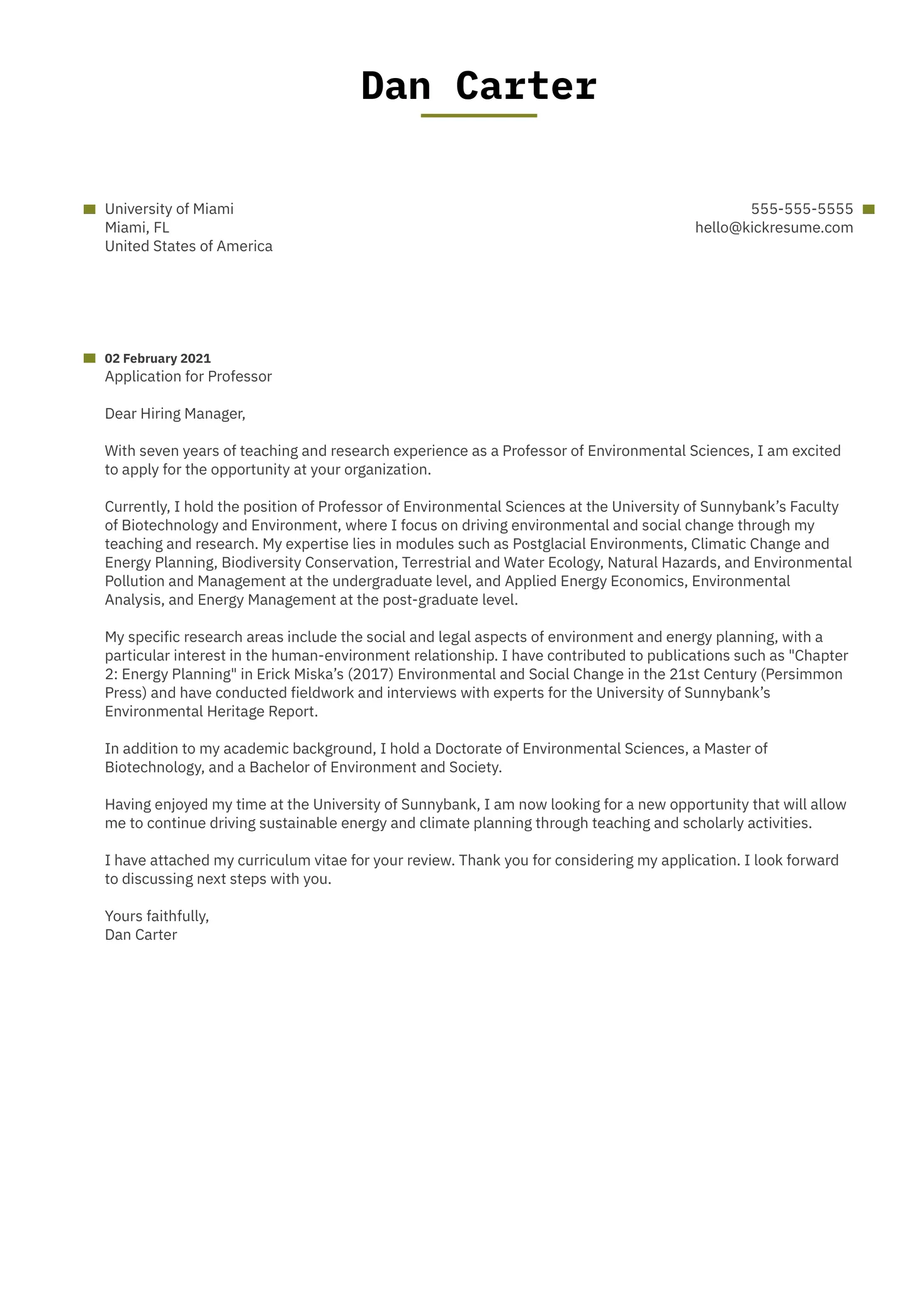What is a Cover Letter for Professor
A cover letter for a professor is a crucial document accompanying your curriculum vitae (CV) or resume when applying for academic positions, research opportunities, or fellowships. It serves as your introduction to the professor or hiring committee, allowing you to showcase your qualifications, experience, and enthusiasm for the specific role or research area. Unlike a resume that provides a factual overview of your achievements, a cover letter offers an opportunity to tell your story, elaborate on your skills, and demonstrate how your aspirations align with the professor’s work and the institution’s goals. A well-crafted cover letter can significantly increase your chances of getting noticed and securing an interview, so it’s essential to invest time and effort in its preparation.
Key Components of a Professor Cover Letter
A strong cover letter for a professor comprises several key elements that work together to create a compelling narrative. It begins with your contact information and the date, followed by a professional salutation. The opening paragraph should capture the reader’s attention and clearly state the purpose of your letter, specifying the position or opportunity you are applying for and where you found it. The body of the letter should then highlight your relevant qualifications and experience, emphasizing research accomplishments, skills, and expertise directly related to the professor’s work or the requirements of the position. You should also demonstrate your genuine interest in the professor’s research, the department, or the institution, and explain why you are a good fit, elaborating on your unique contributions and how your skills can benefit them. Finally, you must tailor the letter to each professor or position, addressing specific needs, proofreading meticulously, and formatting the letter appropriately to maintain professionalism.
Contact Information and Date
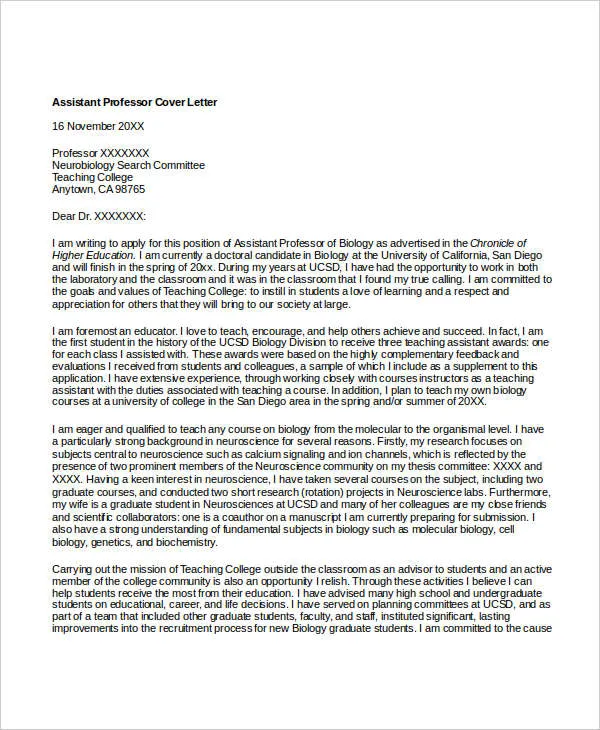
Begin your cover letter by including your full name, address, phone number, and email address at the top left or right corner. Following this, add the date. This section provides the professor with easy access to your contact details and helps organize the document. Ensure your email address is professional-sounding and that your contact information is current and accurate. This basic setup is the foundation of a professional cover letter. It sets a tone of formality and organization from the onset, which is crucial when applying for a position within academia. If you have a professional website or online portfolio, consider including that link as well, to provide the professor with additional information about your work.
Professor Cover Letter: Salutation
Address the professor by their title and last name, such as ‘Dear Professor Smith’. Avoid generic salutations like ‘To Whom It May Concern’ or ‘Dear Sir/Madam’, as they indicate a lack of research and personalization. If you are unsure of the professor’s name, make every effort to find it, either through the department’s website, publications, or by contacting the department directly. Personalizing the salutation demonstrates that you’ve taken the time to learn about the professor and their work. If you know the professor through a mutual acquaintance, mention the connection in the salutation. This instantly establishes a point of connection and makes your letter more memorable.
Crafting the Opening Paragraph
The opening paragraph sets the tone for your entire cover letter, so make it count. Clearly state the position or opportunity you are applying for and where you saw the advertisement or learned about the opening. Briefly mention your primary motivation for applying, highlighting your interest in the professor’s work or the institution. To make a strong first impression, express your enthusiasm and state why you are excited about the opportunity. Avoid generic statements; tailor your opening to the specific role or project. If you have a personal connection or a mutual contact with the professor, you can also briefly mention that here, to make the introduction more engaging. The goal of this paragraph is to capture the professor’s attention and make them want to read further.
Highlighting Your Qualifications and Experience
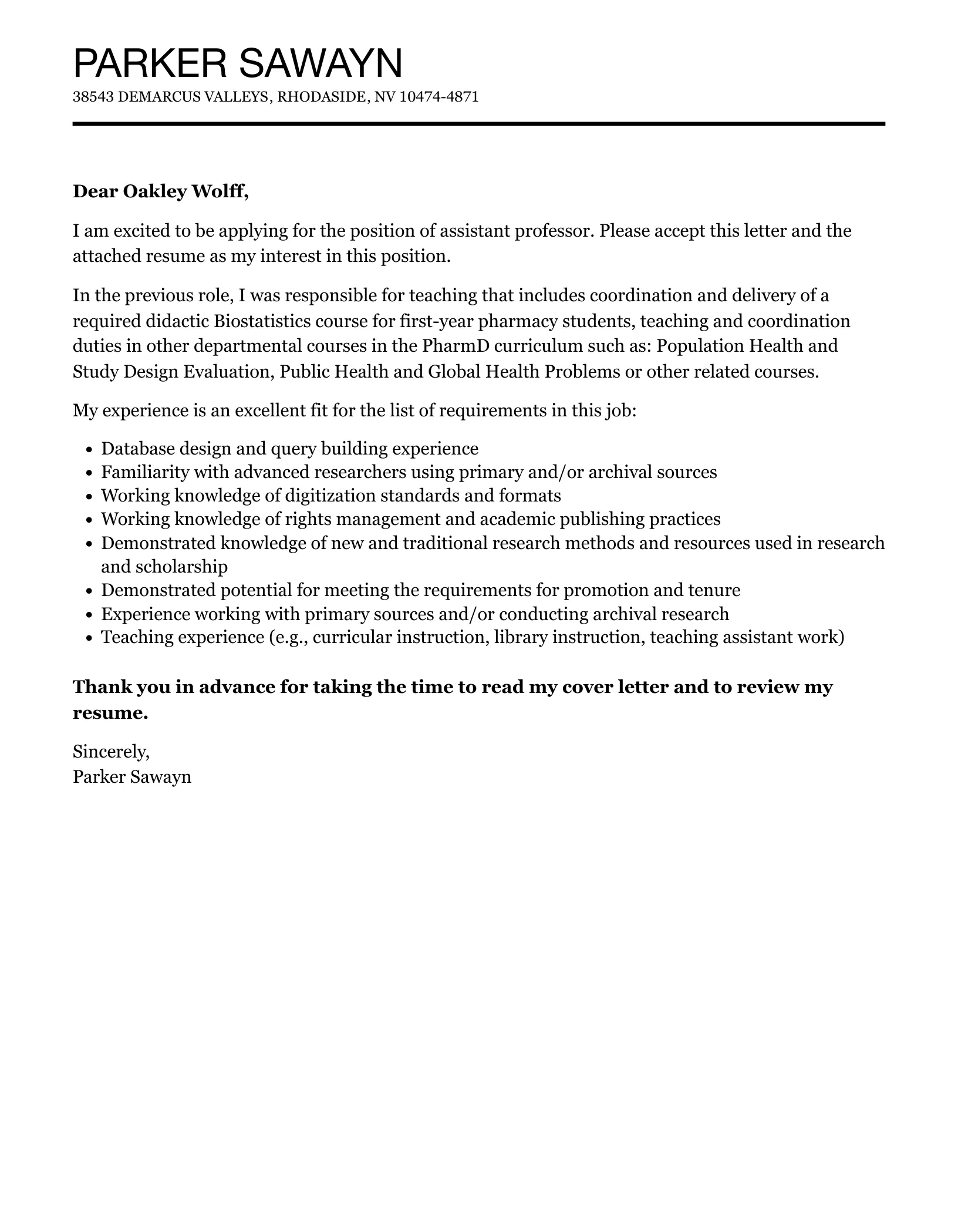
The body of your cover letter should provide a concise overview of your qualifications and experience. Focus on the most relevant aspects of your background, aligning them with the requirements of the position or the professor’s research interests. Use specific examples to illustrate your skills, and quantify your achievements whenever possible. For instance, mention the number of publications, grants received, or projects completed. Adapt your content to the specifics of the role and the professor’s work. Avoid simply repeating what’s already in your resume; instead, provide additional details, explaining how your experiences have prepared you for this particular opportunity. Demonstrating how your skills align directly with the needs of the role or research area is key to making your application successful.
Showcasing Research Accomplishments
Detail your research accomplishments with clarity and impact. Mention specific research projects, publications, presentations, and any awards or recognitions you have received. Briefly explain your role and contributions to each project, highlighting the key results and their significance. Tailor your descriptions to align with the professor’s research interests; demonstrate that you have a good understanding of their work and show how your accomplishments complement it. Use strong action verbs to describe your research activities and quantify your achievements whenever possible. This section is particularly important for academic applications, as it demonstrates your capacity for scholarly work and your potential to contribute to the professor’s research program.
Mentioning Relevant Skills and Expertise
Highlight your relevant skills and expertise, whether they are technical skills, software proficiency, or soft skills such as communication and teamwork. Describe the skills that are most relevant to the position or research area. Provide examples of how you have used these skills in the past to achieve specific goals. Quantify your achievements when possible. For example, if you managed a team, mention the team size and the project outcomes. If you have experience with specific software or equipment, list them and describe how you have used them in your research. Show how your skills and experience align with the requirements of the role and demonstrate your readiness to contribute to the professor’s research team.
Demonstrating Your Interest in the Position
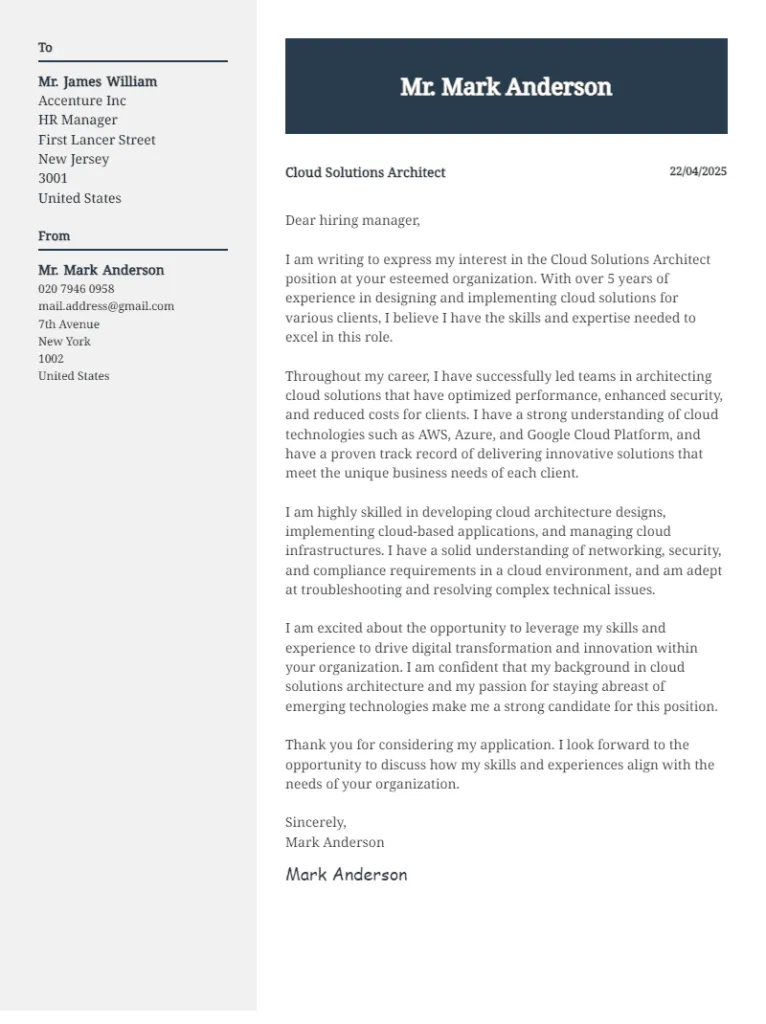
Clearly express your genuine interest in the position and the professor’s work. Explain why you are drawn to this particular opportunity, highlighting specific aspects that excite you. Demonstrate that you have researched the professor’s work, the department, and the institution. Mention specific publications, projects, or initiatives that resonate with you. This demonstrates that you have gone above and beyond to show your commitment to the role. Explain how the position aligns with your career goals and what you hope to gain from the experience. Your enthusiasm and clear understanding of the opportunity will leave a positive impression.
Explaining Why You Are a Good Fit
Explain why you believe you are a good fit for the position. Describe how your skills, experience, and research interests align with the requirements of the role and the professor’s research program. Be specific, providing clear examples of how your contributions would benefit the team or advance their goals. Address any gaps in your experience, providing context or explaining how you plan to overcome them. Demonstrate your eagerness to learn and contribute. This section is an opportunity to sell yourself and persuade the professor that you are the ideal candidate for the position. Show that you’ve considered the professor’s needs and offer concrete solutions.
Cover Letter for Professor: Addressing the Specific Needs
Address any specific requirements or instructions mentioned in the job posting or the professor’s request. For example, if the professor has asked for a particular format or requires you to address certain questions, make sure to do so. Tailor your cover letter to showcase how your background meets these unique needs. This demonstrates attention to detail and a proactive approach, showing that you have carefully read and understood the application requirements. Not following these instructions can result in immediate rejection, so pay close attention to the details and ensure your letter comprehensively addresses all specified points.
Tailoring Your Letter to Each Professor
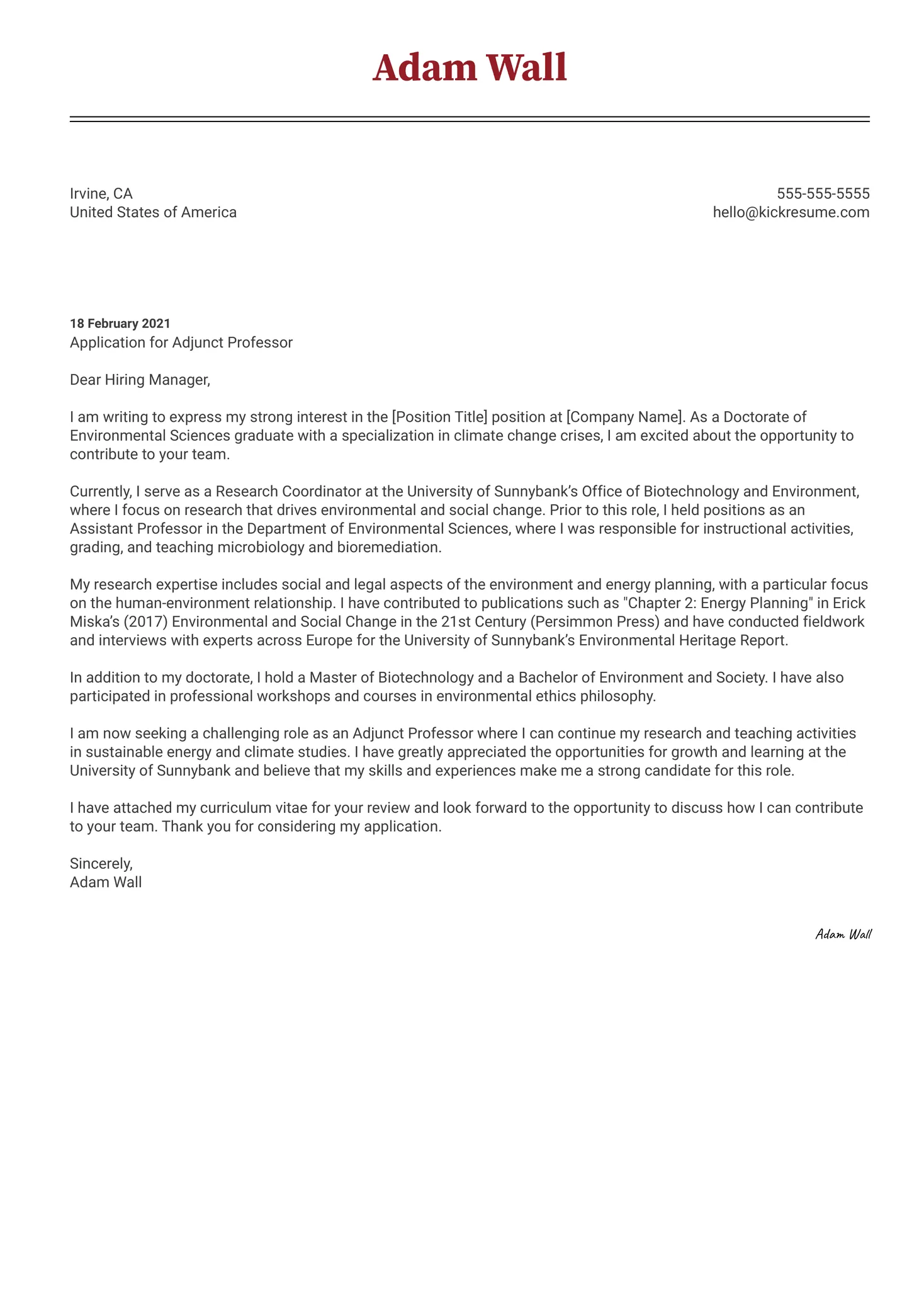
Avoid sending generic cover letters; each application should be tailored to the specific professor and position. Research the professor’s research interests, publications, and recent projects. Mention specific aspects of their work that resonate with you, and explain how your skills and interests align with their research. This tailored approach shows the professor that you have taken the time to understand their work and demonstrates your genuine interest in the opportunity. Personalize your letter by mentioning any mutual connections or shared interests if you know them, this will make your application stand out from the crowd. Take the time to customize each application to show that you understand the nuances of the specific position.
Cover Letter for Professor: Proofreading and Editing
Proofread your cover letter meticulously for any errors in grammar, spelling, and punctuation. Typos and grammatical errors can undermine your professionalism and detract from your message. Use spell-check and grammar-check tools, but also read your letter aloud to catch any awkward phrasing or inconsistencies. Ask a colleague, mentor, or friend to review your letter for feedback, especially those who are familiar with academic applications. A fresh pair of eyes can often spot errors that you may have missed. Ensure that the tone of your cover letter is professional and reflects your enthusiasm for the opportunity.
Cover Letter for Professor: Formatting and Layout
Ensure your cover letter is well-formatted and easy to read. Use a professional font like Times New Roman or Arial in a readable size (e.g., 11 or 12 points). Maintain consistent formatting throughout the document. Use clear headings and subheadings to break up large blocks of text and make it easier for the reader to scan the document. Keep the letter concise and to the point; aim for one page unless explicitly requested otherwise. Use proper margins and spacing. The overall appearance of your cover letter should be polished and professional to make the best impression on the professor.
